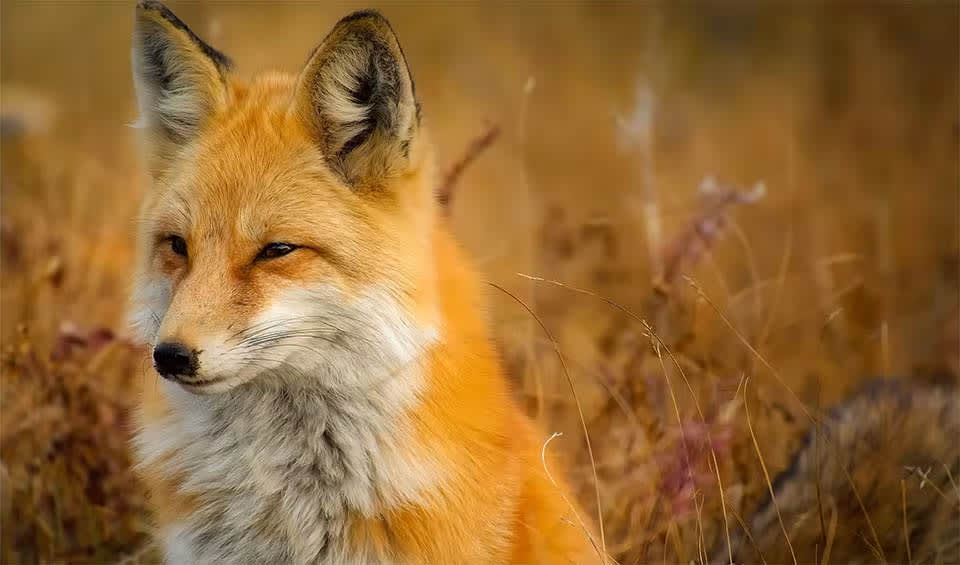Vulpes – True foxes
Vulpes aren't wolves! Members of this genus are smaller and longer than other dogs, with a bushier tail
Unlike their cousins, the wolves, Vulpes species have carved out niches in virtually every type of habitat, showcasing an incredible range of physical and behavioral adaptations. These medium-sized foxes are distinguished by their iconic features: short limbs, long bushy tails that often serve as a “flag” during communication and balance, pointed muzzles for hunting and foraging, and cat-like pupils that enable them to see well in low-light conditions.
Vulpes species exhibit a remarkable variety in fur coloration and texture, adaptations that reflect the diverse environments they inhabit. Northern species, such as the Arctic fox (Vulpes lagopus), boast soft, fluffy, and long fur that provides insulation against the extreme cold, while others adapted to warmer climates may have coarse and sparse fur. Despite these differences, foxes within this genus are monomorphic, meaning they show little structural or genetic variation apart from size differences. This uniformity underscores a successful evolutionary blueprint that has allowed foxes to proliferate across various landscapes.
True foxes are among the most widely distributed terrestrial carnivores, found on five continents and in all climatic zones except the Antarctic. They have proven to be highly adaptable, inhabiting deserts, taiga, steppes, tundras, and high mountains. Their ability to thrive in such varied environments, however, does not extend to dense forests or heavily industrialized areas, where they face competition and habitat loss.
Vulpes species are primarily nocturnal, emerging from their dens at dusk to hunt and forage throughout the night. Their diet is predominantly carnivorous, focusing on small animals and birds, but they can also exhibit remarkable dietary flexibility by including fruits, vegetables, and insects. This opportunistic feeding behavior allows them to survive in areas where traditional prey may be scarce.
Communication among Vulpes species involves a combination of vocalizations, body language, and scent marking. While they do emit a fetid odor for communication, it is not used defensively as in skunks. Instead, scent marking plays a crucial role in territory establishment, mate attraction, and social hierarchy within fox populations.
Species in this genus
Arctic fox
Facing the consequences of global warming, they quickly lose their habitat and are pushed northward with the receding cold
Blanfords fox
A balanced diet for a healthy fox: fruits and insects!
Bengal fox
A desert dweller with a striking appearance, known for its small size, bushy tail, and distinctive black and white facial markings
Cape fox
It can climb, swim, and run faster than you might expect from an animal that weighs just a few kilograms
Corsac fox
A sly, sandy-furred survivor of Central Asian grasslands, threatened by human activity but fiercely protected by conservationists
Fennec fox
Smallest fox in the world, measuring almost 25 cm (10 in), but has enormous ears that can grow up to 15 cm (6 in)
Kit fox
Small but mighty, it rules the desert with ears as big as its heart and pouncing skills that leave prey in the dust
Pale fox
One of the least researched canid species, partly because it lives in remote habitats
Red fox
Ladies and gentlemen, please welcome the world’s most widely distributed carnivore!
Rüppell’s fox
Can be easily identified by its larger ears, making it stand out from red and pale foxes
Swift Fox
Swift by name, swift by nature – this little fox is a real speedster!
Tibetan fox
With a gleaming golden coat and playful pounce, this fox proves that high-altitude living is no match for its wit and whimsy













